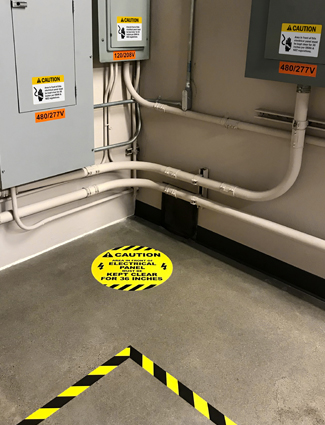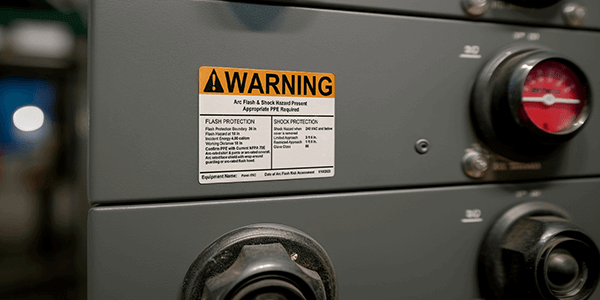Safe Distancing for Electrical Work

Workplace injury statistics consistently show that most people who suffer electric shock or electrocution had contacted circuits they believed or assumed were "de-energized." Electricity can be a silent and deadly killer because workers cannot see it or hear it, and when they feel it, it is too late. Safety protocols and procedures such as safe distancing are put in place to protect workers.
With May being electrical safety month, questions were posed to electrical professionals in a Facebook group to which Duralabel belongs: What are some safety topics you wish more people would pay attention to in electrical work? The list of topics was consistent, with most respondents pointing to arc flash and approach boundaries.
Create Good Boundaries
"Most people I've worked with have no comprehension of the different boundaries," said maintenance technician Jesse Duvuvei.
"Distances. Boundaries. Everywhere I go, I try to educate people about the distance rules and boundaries for panels and services," said Andrew Gallant, an electrical professional in Louisiana. "They still ignore them."
A runaway arc produces radiant heat that spreads in all directions. This heat can be enough to vaporize metal, but it gets weaker as it gets farther from the source. As a result, staying at a safe distance - the arc flash boundary - can prevent serious injuries. Observing these arc flash boundaries is important for safety, as well as for compliance with key standards from the National Fire Protection Association. Visual signals to mark the arc flash boundary can be a useful reminder for those working in or around electrical equipment to keep a safe distance.
There are more than 2,000 arc flash burns and 125 fatal electric shock incidents each year, according to the Occupational Safety and Health Administration. Most are the result of live contact, test instrument failure, and not following lockout tagout plans. When working with or around electrical equipment, here are several important steps to ensure safety:
- Personal protective equipment: Properly select arc-rated PPE to protect from the heat of an arc flash. Make sure insulating gloves and tools will effectively protect workers from shock, based on the equipment's nominal voltage.
- Establish boundaries: Establish work areas and use markings to warn personnel of the limited approach and arc flash boundaries. Include information on PPE and proper tools. Remind workers with visuals on lockout tagout procedures.
- Smart testing and analysis: Conduct hazard risk assessments and employ engineering controls. Pay attention to how many electrical panels there are and the location of the main transformer. Complete live-dead-live testing, and ensure identifier labels are accurate and complete.
"Check, double-check, triple check your work, and never assume anything," said electrical worker Alex Ortiz.
Electrical Work Communication
 Along with using proper PPE, work boundaries, and safe testing practices, it is safe to say that effective workplace communication is also important for safe electrical work. Signs, labels, and floor marking can be lifesavers when important electrical work is done. Alert workers to arc flash hazards and other electrical injury danger through signs and labels.
Along with using proper PPE, work boundaries, and safe testing practices, it is safe to say that effective workplace communication is also important for safe electrical work. Signs, labels, and floor marking can be lifesavers when important electrical work is done. Alert workers to arc flash hazards and other electrical injury danger through signs and labels.
For more safety around electrical equipment, mark the key boundaries in front of the equipment to increase awareness and ensure that only qualified personnel who are fully equipped with the proper PPE are entering beyond those marked points. Workplaces should make arc flash risk assessments, training on safe work procedures, and regular maintenance routine.
Keep workplaces safe with accurate Arc Flash Labeling using our free guide.
Related Resources

Create a Safer Facility with a Proper Arc Flash Boundary
What Is the Arc Flash Boundary? NFPA 70E is the major industrial standard for safe electrical work in the ...
Read
Arc Flash Protection Made Simple for Every Facility
What Is An Arc Flash Protection Boundary? An arc flash protection boundary defines the minimum safe distance ...
Read
What Is An Arc Flash?
An arc flash is an explosive burst of heat and light, caused by a sudden, uncontrolled electrical arc (or ...
Read.png)





